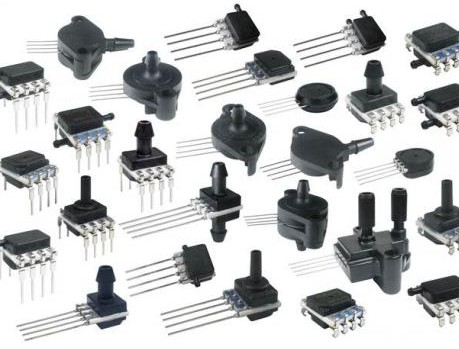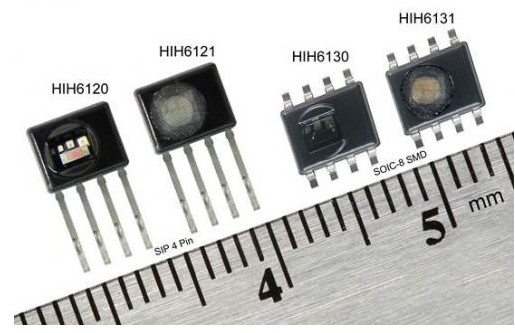Sensors use four methods to reduce the size of medical devices
Smaller and lighter components can also increase the portability of many medical devices. For example, a portable respirator allows medical personnel to quickly move equipment from one room to another when needed, without having to configure a large device in front of each bed. Smaller components can also help developers develop small, lightweight wearable medical devices that allow patients to move more freely after recovery or when receiving chronic disease treatment.
Device miniaturization also makes it possible to use sensors in medical devices such as surgical equipment – ​​these devices have not previously used sensors. Sensor manufacturers can help designers reduce the size of medical devices in four ways, including providing flexible package options, reducing sensor IC size, integrating multiple sensor functions, and device intelligence.
Flexible package options
Sensors developed by Honeywell Sensing and Control offer a variety of mechanical interfaces, mounting options, and I/O options that enable medical product designers to choose the package that best fits the overall design of the product. Choosing the right interface also reduces board size and product cost. This is especially important for applications where the sensor needs to be as close as possible to the measurement medium for accurate measurements, for example, dialysate and venous blood pressure are measured during dialysis treatment.
In addition, a variety of mounting options allow designers to more flexibly arrange the sensor's orientation on the printed circuit board (PCB), saving installation space, and simplify product assembly and assembly speed for the best overall system.
For example, when installing options with manifolds, designers do not have to use pipes and associated connections to reduce overall product size. This type of installation benefits many medical devices, including infusion pumps, analytical instruments, respirators, and wound treatment devices.

Description: Honeywell Sensing and Control's TruStability Board Mount Pressure Sensors offer a variety of port connections, mounting options and I/O options to allow medical device designers to select the right interface and package to reduce board size . TruStability pressure sensors are fully compensated, calibrated and amplified to reduce system component count and reduce costs. Similarly, Honeywell Sensing & Control offers the option to use liquid media.
Smaller sensor integrated circuit
Sensor manufacturers are manufacturers that control the design and manufacture of all components of the sensor, including sensing elements, seals, housings, packages, etc., to optimize the performance and size of the sensing components.
There is an inevitable interaction between the sensor and the surrounding mechanical structure. In order to develop sensors that are as small as possible, manufacturers need to understand the characteristics of all materials and components in the sensor package, including sensing components, plastics, lead sheets, etc., otherwise the best sensors cannot be designed.
For example, respirators used in ambulances are often subjected to extreme temperature conditions, and pressure sensors on the breathing apparatus will expand and contract with temperature changes, resulting in torsional effects such as distortion. If the sensor package moves, shrinks, expands, or twists, the sensor chip will bend, which can affect sensor performance. If the sensor manufacturer can effectively control all manufacturing processes, including materials, sensor chips, and packaging, it is possible to design a sensor with a desired package size by considering changes in sensor performance under different temperature conditions. Adapt to any mechanical or temperature stress.
Multi-function integrated sensor
As the health care provider business begins to shift to home care, it is imperative to reduce the size of medical devices such as respiratory therapy and diagnostic equipment. In many cases, medical device designers want to be able to design sensors that integrate multiple functions, such as integrating temperature and humidity detection into one sensor. This saves board space, reduces the size of medical devices, or enables more advanced features that reduce sensor complexity.
From the point of view of assembly and manufacturing, multi-function integrated sensors also have many other advantages, such as the ability to allow designers to place only one sensor instead of two sensors on the board, eliminating PCB routing to the microprocessor and saving Space makes the design validation process easier.
Placing one sensor instead of two can also reduce material costs, reduce assembly and manufacturing errors, and require fewer connectors (connectors are prone to failure), making multi-function integrated sensors more reliable.

Description: Honeywell's space-saving HumidIcon digital humidity/temperature sensor implements two functions in a miniature package. The HumidIcon sensor can also operate at voltages as low as 2.3Vdc, making it suitable for low-power portable applications, saving power and extending battery life.
Intelligent equipment
Designers can also integrate more smart devices into the sensor module to reduce product size. This method enables the sensor to be fully calibrated, temperature compensated, and signal amplified to output higher resolution digital signals. This feature reduces the number of electronic components on the PCB, thus reducing product size, weight, and cost.
By choosing the HumidIcon sensor, you no longer need to use external components such as resistors and amplifiers to compensate and calibrate the sensor signal, and the designer does not need to perform compensation and calibration tests (testing takes a lot of time and cost), so the sensor can be greatly shortened Manufacturing cycle.
Digital interfaces also affect the miniaturization of products. No need to use resistors, capacitors, amplifiers and other components, the sensor can be directly connected to the microprocessor through the digital interface, thereby saving PCB space.
In addition to smaller packages, sensor integration, and device intelligence, medical device designers looking to reduce product size have many other factors to consider, such as lower battery life with lower voltages and lower power consumption. Wake-up/sleep mode is an important way to extend battery life by reducing the size of the power supply and thus the weight of the medical device.
The compatibility of sensors with liquid media is also one of the designers' concerns. For example, in pressure measurement medical applications, pressure sensors are often exposed to a variety of liquid media, such as blood, water, or chemicals. If the sensor is not compatible with the liquid medium in the application, then the designer needs to ensure that the sensor is reliably protected against sensor failure - which typically requires additional components to protect the sensor and take up more space.
High component flexibility allows medical device engineers to select the right sensor. Sensor manufacturers offer a wide range of options including ports, mounting options, packaging, voltage range, digital/analog output, and liquid media compatibility, enabling designers to quickly select products that meet their application needs without the need for costly customized services. . At the same time, it allows them to quickly change device design and specifications without adding additional cost or delaying product launches.
Bluetooth Active Noise Canceling Headphones
Active noise canceling headphones
SHENZHEN YINZHIGUAN DIGITAL TECHNOLOGY CO.,LTD , http://www.yzgmusiccrown.com